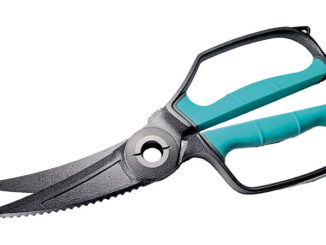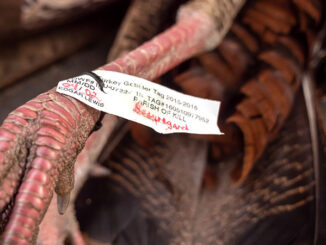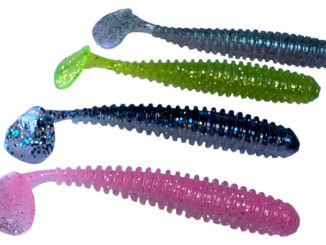
The Baton Rouge area offers plenty of public ponds that present anglers young and old the opportunity to fill their stringers.
Many riflemen will tell you if there is one company that knows how to get it right, it is Remington. The frequent comment heard is “Remington shoots straight, straight out of the box.” And that has been my experience, both with personal guns and the numerous rifles I end up tuning for friends each year.
Sometimes, it might take a little experimenting to find the right bullet, but Remington almost always performs better than adequate, right out of the carton.
When the unusually configured barrel of the new Remington Model 700 VTR caught my eye, I decided my usual practice of signing for a test gun from the manufacturer wasn’t necessary. Experience proved the gun would shoot, and the features Remington built into this bolt gun intrigued me.
First off was that barrel. Talk about stand out on a gun rack. Who ever saw a triangular-shaped barrel before? And it was the right length, too — just 22 inches.
The VTR stands for “Varmint Tactical Rifle,” which falls into the ever-growing category of “tacti-cool” rifles with standard applications made to look like tactical guns with law enforcement or military uses. Of course, tactical rifles are no-nonsense, utilitarian rifles, spare to the point of spartan with no unnecessary parts, everything designed for a purpose with no frilly cosmetics.
The new VTR is the long-proven Model 700 action with a patented triangular barrel, a design that offers more rigidity and less weight than a round barrel of equal diameter. With the larger surface area, greater heat dissipation is also claimed. An integral muzzle brake also acts as a protective crown for the rifling, extending past the crown for two inches.
The camo-green composite stock has black grips overmolded into the forearm and pistol-grip, and it has two sling swivels on the front end — one for the sling, the other to attach a bipod for the varmint fields.
The gray, almost rough finish on the barrel and receiver is reminiscent of the old military “Parkerized” finish — a handsome, no-nonsense finish that seems to soak up oil and shed moisture with equal aplomb.
Since I’ve been planning a varmint hunt for prairie dogs this summer, I intended to build a rifle to take with me — in either .223 Remington or .22-250 Remington. Once I spotted the VTR, knowing from experience it would shoot, the decision was made, and I ordered one in .22-250
Long considered one of the most accurate, easily adapted cartridges around, the .22-250 is known by old-time shooters by the nickname “.22 Varminter” — which gives you an idea of the status the cartridge holds in those ranks. I had never owned one, but the history of the cartridge intrigued me, and I started buying different weight bullets in anticipation of its arrival.
Remington has installed a new trigger mechanism on the 700, which they call the X-Mark Pro Adjustable. That means they want it adjusted by a factory-trained gunsmith.
I couldn’t stand the approximately 4.5-pound pull that came from the factory, so I took it to Reynerson’s Gunsmith Services (www.reyenersons.com ) for a trigger job. When I asked them to bring the trigger down to my preferred 2 pounds or so, I was informed the factory would allow them to set the triggers no lower than 3 pounds. Lord, save me from lawyers, litigious societies and heavy rifle triggers. I took what was offered.
At the same time, I had them mount a nice 4-16×50 Alpen scope (www.alpenoptics.com ) with an adjustable objective on high mounts, and I was in business. I could hardly wait to start testing loads and seasoning the barrel.
My normal practice with a new rifle is to buy an array of factory rounds and shoot them, scrubbing the barrel with Butch’s Bore Shine or other copper solvent after each two or three shots for about 20 rounds. Then I go to cleaning after 5-6 rounds for another 20 or so, then after every 10 rounds for another 20.
At first, the rifle frustrated me. It would shoot slightly above minute-of-angle (one inch) in a three- or five-shot group, then climb out to almost 2 inches — which was rapidly determined to be cleaning-related. If I let it go past five or six shots without a good scrubbing, the groups widened considerably. This didn’t make sense as friends familiar with the caliber assured me their guns didn’t require excessive cleaning to maintain accuracy.
I also suspected I wasn’t reaching the full potential of the barrel because of bullet weight. Most of the rounds I could find were in 55-grain or larger sizes. These would require a faster rifling twist for optimum accuracy.
So I called the factory, and asked to speak to an engineer or someone in the sales department. I was given the number of John Fink, who turned out to be the project manager on the VTR.
Fink told me the twist rate was 1-in-14 — the recommended rate for the .22-250 as specified by the Sporting Arms and Ammunition Manufacturers, Inc. (SAAMI). Thus, he told me, the early weights originally designed for the cartridge were probably going to give me better performance. I should begin experimenting with weights in the 45- and 50-grain range, he said.
I don’t know if the 80 rounds or so of factory ammo had finally done its job, but suddenly, the rifle came alive for me.
Hornady V-Max ammo in 50 grains with a ballistic tip claimed 3800 fps, and gave up a five-shot group that measured 1 1/8 inches at 100 yards. But that was one flyer. Four of the five were touching, and printed inside of 5/8 inch.
Bulk-purchase 40-round boxes of 50-grain Remington Jacketed Hollow Points (JHP) consistently fired five-shot groups inside of 7/8 inch.
After more than 120 rounds fired through the barrel, I’ve reached the point my friends told me about. Now, a quick swab with a dry patch is all the barrel needs when the groups seem to be growing. They tighten right back up, if I do my job.
I’m most pleased with my new “tacti-cool” rifle and caliber. It should prove to be an affordable and really accurate sniper rifle on prairie dogs out past 300 yards.
Now I’m hitting the reloading bench to tighten those groups into the proverbial “one-hole” for which this caliber is famous.
Then, on to the varmint fields for the ultimate test — I’m sure I’ll be telling you about that hunt before the summer’s over.
Gordon Hutchinson’s newest book, written with Todd Masson, is The Great New Orleans Gun Grab, a searing expose’ of the scandal of gun confiscations in New Orleans in the aftermath of Hurricane Katrina. It is available at www.neworleansgungrab.com.
The Quest and the Quarry, Hutchinson’s novel, is a coming-of-age tale of a line of trophy bucks and the youth of a Mississippi farm family that hunts them. It is available at www.thequestandthequarry.com.
Both books have been chosen Outdoor Books of the Year by the Southeastern Outdoor Press Association, and are available from the publisher at (800) 538-4355.
Read more guns, shooting, and politics at www.theshootist.net.


